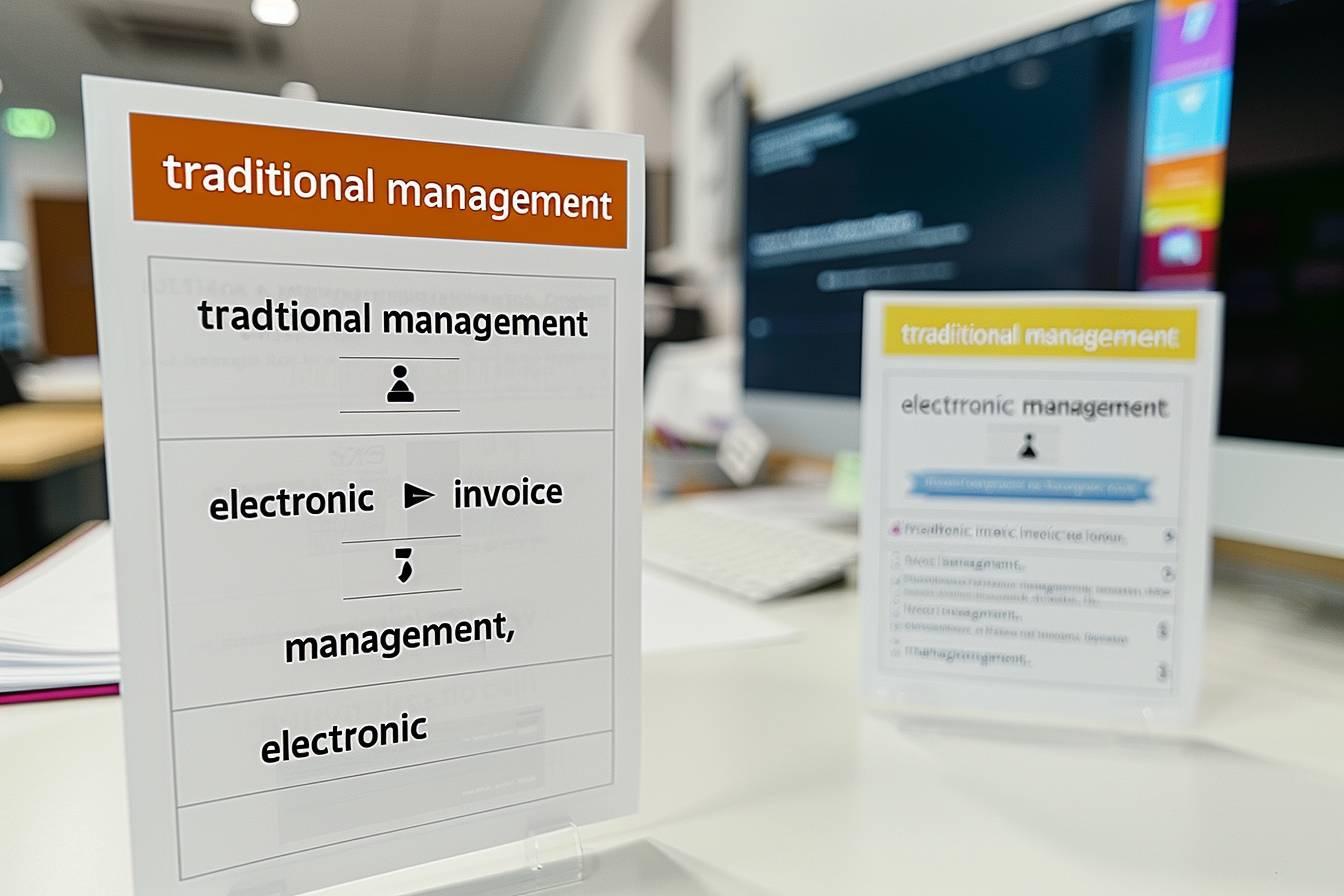Electronic invoicing is revolutionizing the way companies manage their accounts. For chartered accountants, this innovation represents a major opportunity to optimize their processes and offer superior service to their clients. Let’s find out how this new tool is transforming the day-to-day lives of accountants.
What is electronic invoicing for chartered accountants?
Electronic invoicing, also known as e-billing, is a digital document that replaces the traditional paper invoice. For accountants, it represents much more than a simple change of medium. It represents a veritable revolution in the management of financial flows and bookkeeping.
This digital solution offers numerous advantages:
- Automation of accounting processes
- Reduced data entry errors
- Considerable time savings
- Improved transaction traceability
- Compliance with new regulations
Electronic invoicing is part of a broader approach to the dematerialization of commercial exchanges. It not only facilitates the work of the chartered accountant, but also improves customer-supplier relations. Just as optimized contact forms streamline online communication, e-bills simplify financial interactions between companies.
The benefits of electronic invoicing for chartered accountants
The adoption of electronic invoicing by chartered accountants is leading to a profound transformation of their profession. Here are the main benefits they stand to gain:
1. Productivity gains: The automation of accounting data entry frees up precious time for chartered accountants. This means they can concentrate on higher value-added tasks, such as providing strategic advice to their clients.
2. Greater reliability: Fewer data-entry errors improve the quality of accounting data. As a result, accountants can produce more reliable financial statements and more relevant analyses.
3. Easier collaboration: The exchange of electronic invoices simplifies collaboration between accountants and their clients. Data is available in real time, enabling more effective monitoring of a company’s financial situation.
4. Regulatory compliance: Electronic invoicing meets legal requirements for dematerialization. As a result, chartered accountants can guarantee their clients full compliance with current regulations.
To illustrate these advantages, here is a table comparing traditional management and management with electronic invoices:
| Criteria | Traditional management | Management with e-bills |
|---|---|---|
| Processing time | Several hours per day | Minutes per day |
| Risk of error | High | Very low |
| Storage cost | High (physical archiving) | Negligible (digital storage) |
| Data accessibility | Limited | Instantaneous and remote |

How to implement electronic invoicing in an accounting firm
The transition to electronic invoicing requires a methodical approach. Here are the key steps for successful implementation:
- Needs assessment: Analyze current processes and identify potential areas for improvement.
- Solution selection: Select an e-invoicing software package tailored to the specific needs of your practice.
- Team training: Ensure that all staff are familiar with the new tool.
- Informing customers: Communicate the upcoming changes and their benefits.
- Gradual implementation: Start with a group of pilot customers before rolling out the system more widely.
Implementing electronic invoicing is like optimizing a website. Just as choosing a high-performance WordPress theme improves the user experience, adopting e-billing optimizes the accounting firm’s efficiency.
It’s vital to choose a solution that integrates seamlessly with the firm’s existingdigital ecosystem. Compatibility with accounting, customer relationship management (CRM) and document sharing software is essential to take full advantage of dematerialization.
The impact of electronic invoicing on customer relations
The adoption of electronic invoicing by chartered accountants is profoundly transforming their relationship with clients. This development is part of a wider trend towards the digitalization of professional services.
The benefits for clients are numerous:
- Real-time access to their accounting situation
- Shorter invoice processing times
- Better visibility of financial flows
- Reduced risk of loss or error
- Easier administrative procedures
Electronic invoicing enables chartered accountants to position themselves as true strategic partners for their clients. By freeing up time for administrative tasks, they can concentrate on financial analysis and personalized advice.
This evolution is reminiscent of the transformation of the role of webmasters with the advent of CMS such as WordPress. Just as webmasters have evolved from simple technicians to digital strategy consultants, so accountants are becoming privileged financial management advisors, thanks to electronic invoicing.
Future prospects for electronic invoicing in public accounting
The future of electronic invoicing in public accounting looks promising. Technological and regulatory developments will continue to shape this field in the years to come.
Artificial intelligence will play a growing role in the analysis of data from electronic invoices. This will enable accountants to provide their clients with more accurate insights and more reliable financial forecasts.
Blockchain could also revolutionize the security and traceability of financial transactions. This technology would offer an additional guarantee of authenticity and inalterability for electronic invoices.
Last but not least, the growing integration of information systems between companies and their chartered accountants promises increasingly fluid and transparent financial management. This interconnection will reinforce the role of the chartered accountant as the linchpin of a company’s financial health.
Electronic invoicing is just the first step towards fully dematerialized, interconnected accounting. Accounting firms that know how to anticipate and adapt to these developments will be best placed to thrive in this new digital environment.

